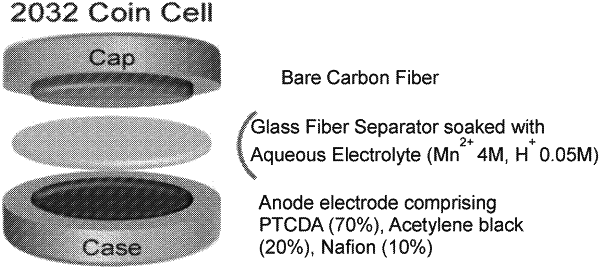| CPC H01M 8/188 (2013.01) [H01M 4/50 (2013.01); H01M 4/8626 (2013.01); H01M 4/96 (2013.01); H01M 12/08 (2013.01); H01M 2004/028 (2013.01); H01M 2004/8684 (2013.01)] | 7 Claims |

|
1. A method of making a battery, the method comprising contacting an electrolyte with an anode and a cathode, wherein:
the electrolyte is capable of conducting protons and/or hydronium ions and comprises (a) protons and/or hydronium ions and (b) a reduced cathode substance, the reduced cathode substance having a conjugate redox pair which is a cathode substance being an oxide of one or more metals or an oxide of a halide; and
the anode comprises a material capable of absorbing protons and/or hydronium ions:, and wherein
the cathode substance is MnO2 and the reduced cathode substance is Mn2+; or
the cathode substance is MnO4− and the reduced cathode substance is MnO2; or
the cathode substance is PbO2 and the reduced cathode substance is Pb2+; or
the cathode substance is Bi2O4 and the reduced cathode substance is BiO+; or
the cathode substance is Cr2O72− and the reduced cathode substance is Cr3+; or
the cathode substance is VO2+ and the reduced cathode substance is VO2+; or
the cathode substance is ClO4− and the reduced cathode substance is ClO3−; or
the cathode substance is BrO3− and the reduced cathode substance is Br2; or
the cathode substance is IO3− and the reduced cathode substance is I2;
wherein the anode comprises an electrically conductive substrate in contact with the material capable of absorbing protons and/or hydronium ions, wherein the material is brought into contact with the substrate by airbrushing a fluid containing the material onto the substrate; and
wherein the fluid containing the material capable of absorbing protons and/or hydronium ions comprises the material, a binder and a solvent.
|